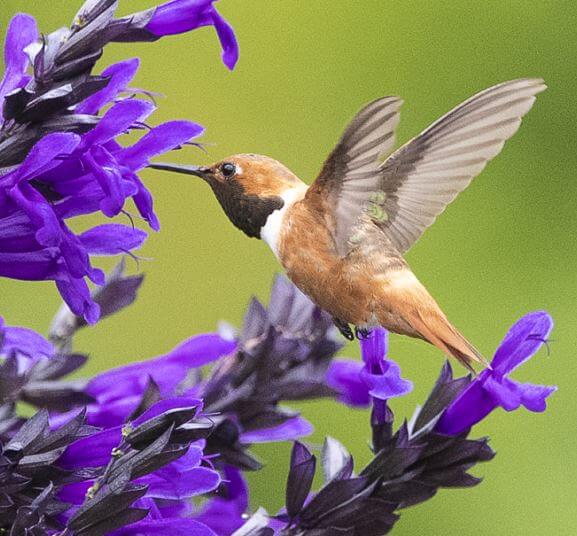Last Updated on January 6, 2023 by a Friendly Gardener
The Bodacious Hummingbird Falls plant or the Hummingbird Falls plant is a hybrid of the Salvia guaranitica ‘Black and Blue’, which is also called anise-scented sage, a species of the flowering plant belonging to Lamiaceae or the sage family.
The Hummingbird Falls plant has been bred by the renowned Salvia guru, Kermit Carter of Flowers by the Sea in California.
Perfect for hanging baskets, small containers, mass landscape plantings, and garden borders, the Hummingbird Falls plant bears gorgeous, eye-catching dark blue blooms that are loved by plant owners.
If you’re keen to grow the plant with its stunning flowers in your home, then read about all there is to know about the Hummingbird Falls’ plant care.
About the Hummingbird Falls Plant
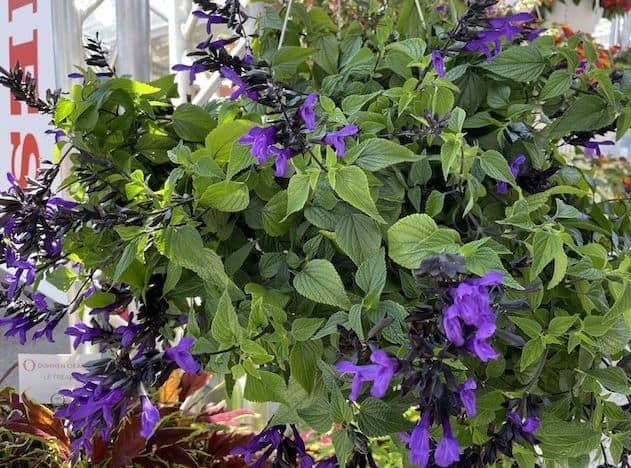
The Hummingbird Falls plant has dark green foliage that bears a beautiful anise fragrance. The compact Hummingbird Falls plant grows to a height of around 1 to 2 feet and spreads to around 3 to 4 feet.
The Hummingbird Falls plant is a perennial that can trail from hanging baskets, unlike other salvias that grow upright naturally. The plant bears 2-inch-long vivacious dark blue tubular flowers that grow on black-colored stems arising from black calyxes.
These gorgeous tubular, nectar-rich flowers bloom from spring to fall and naturally attract pollinators such as hummingbirds and large butterflies.
Hummingbird Falls Plant Care

In general, like other Salvias, the Hummingbird Falls plant is somewhat heat and drought-tolerant. With proper care, the plant will produce flowers all through the summer.
Regular fertilizing and deadheading of the plant during its growing season will help to prolong the flowering period.
If you want to grow the Hummingbird Falls plant in your home, in this section, we have discussed in-depth about the Hummingbird Falls plant care.
Temperature
The Hummingbird Falls plant grows well in temperatures between 70°F and 78°F during the daytime and at night time, they prefer temperatures between 60°F and 64°F.
To produce flowers, the plant prefers warm temperatures early during the growing season. Typically, the Hummingbird Falls plant grows well in the USDA hardiness zones 7 and 8.
Light
The plant thrives in conditions of full sun when there is direct sunlight for around 8 hours or more or in partial sun or mostly sunny conditions.
The plant also does well in partial shade conditions, where it receives around 4 to 6 hours of direct sunlight in the morning or cool sunlight in the afternoon.
Watering
Native to California, the Hummingbird Falls plant is drought-tolerant and can survive with very less watering. But you must water the plant adequately and ensure that the soil is a little moist at all times all through the summer.
During late summer and early fall, you can reduce the watering and water very sparingly. To help your Hummingbird Falls plant grow, in the first year, water the plant a little more than normal.
Soil
Hummingbird Falls plant grows well in a moist, well-drained, and fertile potting mix. Make sure that the plant wilts slightly before the next watering.
Allow the soil to dry out completely before watering, especially during the cooler and cloudy months to prevent any diseases.
The plant does well in soils with a pH between 5.4 to 6.5.
Fertilization
The Hummingbird Falls plant needs constant fertilization. This will help to prevent the leaves from turning yellow. Use a well-balanced, nitrate-based fertilizer that contains micros.
Ensure that the pH is maintained at a level between 6.0 and 6.5. Occasional leaching will maintain the EC at 1.0 or below.
Growth Regulation
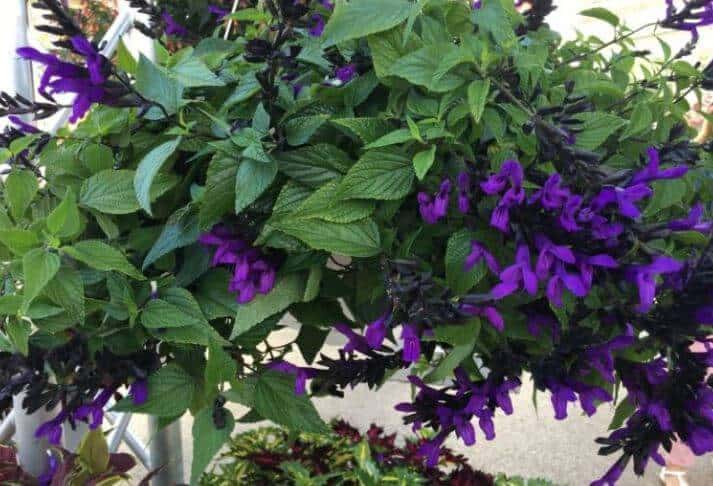
The plant grows quite vigorously and treating them with growth regulators can be beneficial. But you must take care not to over-treat the plants if they are in hanging baskets, as this can cause the plants to lose their cascading characteristics.
It is recommended to spray the Hummingbird Falls plant around 3 weeks after transplanting.
Pinching
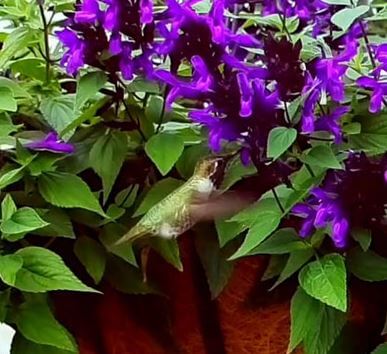
The Hummingbird Falls plant should be pinched regularly. This not only helps to maintain a well-rounded shape but also encourages more branching and production of flowers.
It is recommended to pinch the liners during propagation or otherwise, the plant must be pinched at the time of transplant. The plants will do well if they are pinched 1-2 times more during their growing phase, around 2-3 weeks after the transplant.
Deadheading and Pruning
Deadheading or pruning the Hummingbird Falls plant is generally not necessary. But doing this will help to keep the plants neat.
Pests and Diseases
Hummingbird Falls plants are quite resilient to pests and diseases. But they can be susceptible to pests such as fungus gnats, whiteflies, and thrips. You can get rid of the pests with an insecticide like neem oil.
The plant may also be prone to diseases like downy, powdery mildew, Pythium, Rhizoctonia, and Botrytis, which is mainly because of high humidity and poorly drained soil.
To prevent diseases, it is best to allow the potting soil to dry between the waterings, especially during the cooler months. Also, water the plants early in the morning so that they can dry out during the day.
If you notice powdery mildew on the Hummingbird Falls plants, then make sure to remove the areas that have been affected to prevent the spread of the mildew. Also, reduce watering the plants until they recover.
Propagation
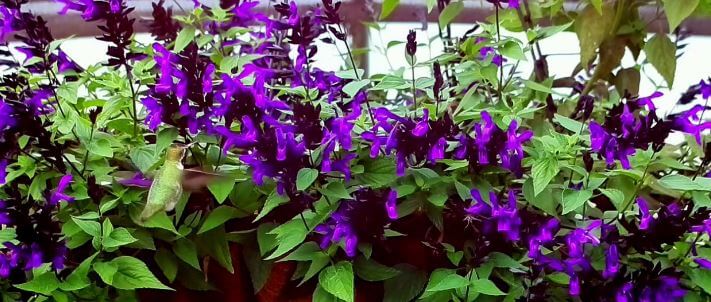
You can propagate the Hummingbird Falls plants through rhizomes. You can do this by carefully dividing the rhizomes and transplanting them into your garden.
But you must make sure that the rhizomes are uniformly moist but they should not be over-hydrated as it can cause root rot.
Make sure that the rhizomes are planted in a cool and dark area and leave some soil around the root ball. When the plants grow, you can then move them to a bright and warm area.
Wrapping Up
If you want to add more color to your garden, then you can’t go wrong with the Hummingbird Falls plants with their vibrant and gorgeous blooms.
Not only will these plants add to the beauty of your garden but they will attract beautiful hummingbirds and other pollinators and make your yard even more thriving.

